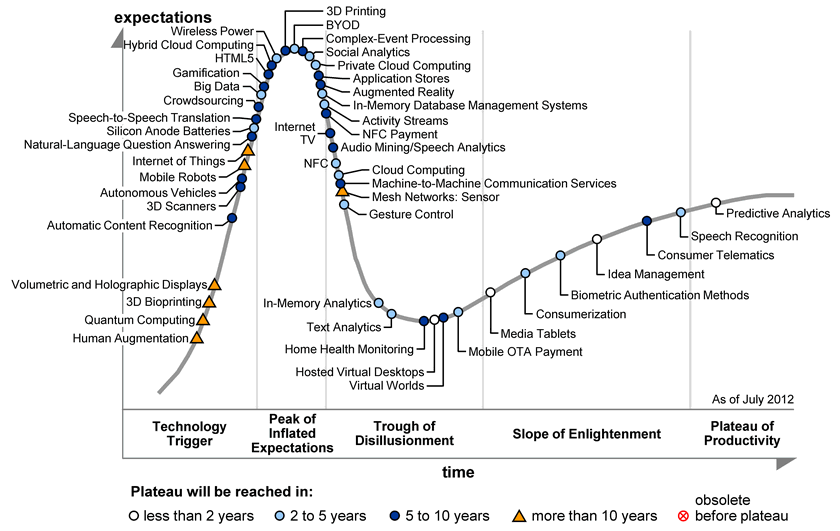This is a little late publishing this post (it should have been 2 years back), however, my appreciation of this map has improved, and I thought it would be a good time to talk about the Gartner Digital Marketing Map.
Tag: gartner
Gartner Hype Cycle 2015
I have been following the Hype Cycle reports that Gartner publishes for quite some time (since 2008, if I remember correctly). There are multiple applications of the Hype Cycle, and for these reasons I keep myself updated whenever a new report is published.
Gartner Magic Quadrant of Cloud Storage Services
I remember my early childhood when the first PC I ever owned was delivered to my house. It was a secondhand XT 8088, a very simple CPU architecture (I studied this during my engineering days later). The machine did not have a hard-disk. It had a 640 kB RAM storage which was used for the OS and any other programs that I wanted to run (mostly games).
Continue reading “Gartner Magic Quadrant of Cloud Storage Services”
Gartner Hype Cycle for Emerging Technologies
Every technology that is embraced by the world goes through a process of adoption. Gartner instituted this as the hype cycle.
What is the Hype Cycle?
The hype cycle talks about how any technology goes through the process of being talked about, being heralded, being written off and finally being adopted in mainstream businesses.
The graph you see above you shows the x-axis as the different stages of technology adoption, starting from the trigger or the invention of that technology, to the expectations of that technology by the enthusiasts, to the stage where it is discarded by early adopters to being finally understood and put to good use by smart users.
Obviously on the y-axis you have the expectations of the world.
Gartner brings in a third dimension to this graph by indicating a time period on when the technology will be a mainstream one. In this graph for example, the Cloud Computing technology is supposed to go mainstream within the next 2 to 5 years. This was made in 2012, so to interpret it correctly we should say that Cloud Computing will be embraced by all around 2014. People who are following the news of Cloud Computing can relate to the Trough of Disillusionment!
How do you interpret the Hype Cycle?
The hype cycle represents the time when a certain technology gets adopted by businesses. So, it has different implications for different people.
Software Developer
Learn to work with this technology early on, preferably in the Slope of Enlightenment phase. It will open up doors to many career pathways. Learn technology while everyone else is learning and learn it fast!
CTO of a start-up
Basing your product on a certain technology base will help your start-up catch the eyes of an investor. Your organization needs money and making the smart move to get the market talking about your technology adoption can get you that added PR. Keep an eye out for technologies lying in that Trough of Disillusionment phase, see how they can mesh with your product/services. Try a few prototypes, it’s well worth the efforts.
CTO of a mature organization
More often than not, you would be in charge of the operations team as well. In some few cases, you would also be the visionary of the organization (this should actually be your role). Try to find technologies which are about to hit the Plateau of Productivity and see which ones suit your requirements. It will bring efficiencies in your operations.
Keep in mind, that for most of these cases the idea would be to beat the competition in adopting a certain technology, so the focus would be on adopting the technology before it becomes mainstream.
At the end of the day, it is all Hype
Hype is after all extensive publicity. It is used to get the attention of people.
Bear in mind that if you do not want undue attention and if it is not broken, then you do not need to fix it.
However, some times you do get cues on possible disruptive technologies, be on top of those, since they have the potential to change your world. For e.g the way aeroplanes changed the shipping industry.
Sometimes all talk is still action!



